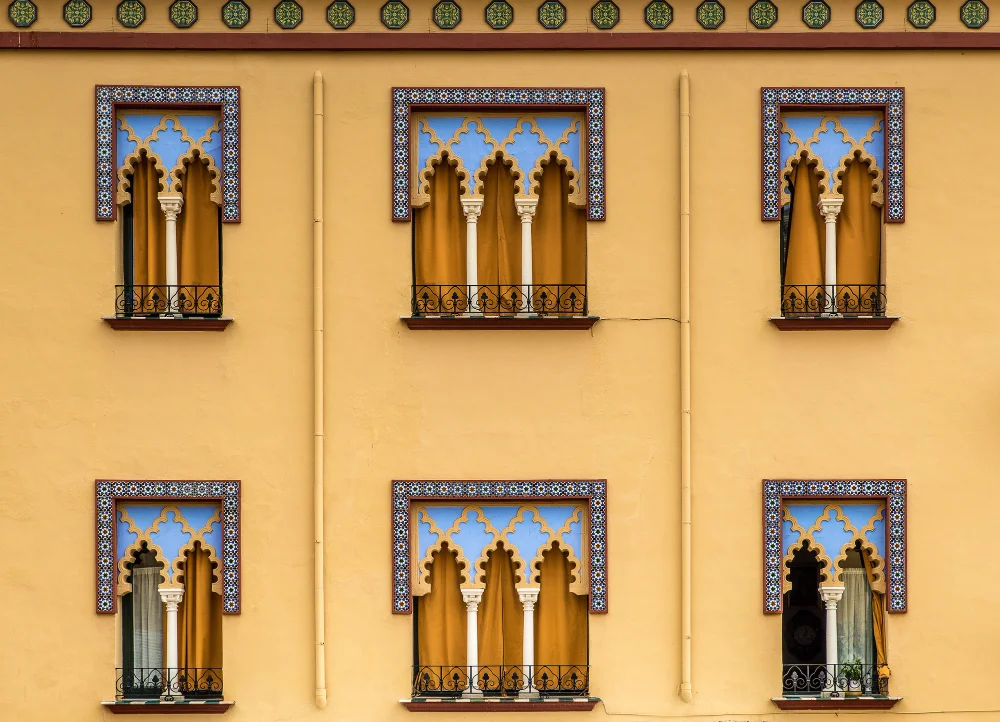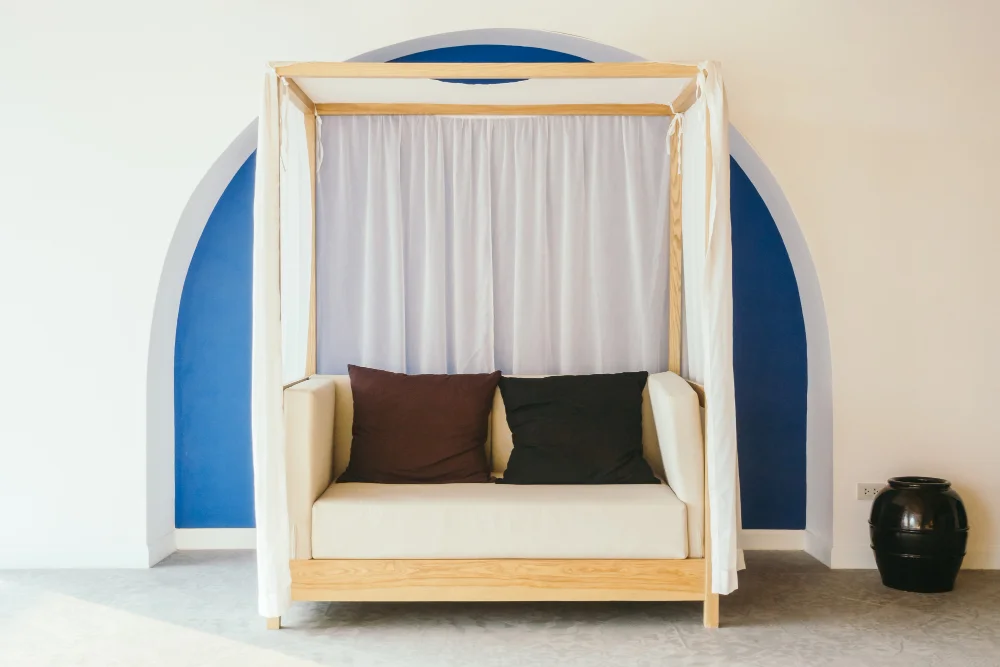Designing a home goes beyond walls and roofs; it is about creating a living experience. Among the most iconic styles, the arch design home stands out for its graceful curves, structural strength, and timeless appeal. From ancient Roman architecture to modern minimalist houses, arches have symbolized elegance, durability, and creativity.
Today, homeowners, architects, and designers continue to adopt arch styles in doorways, windows, ceilings, and facades to give homes a perfect balance of tradition and innovation.
In this article, we will explore everything about arch design homes, their influence on modern architecture, unique benefits, and practical applications that blend beauty with function.
History of Arch Design Homes
The story of arch design homes dates back thousands of years. The Romans perfected the art of arches in aqueducts, amphitheaters, and basilicas. Later, Gothic architecture added pointed arches to churches and castles, symbolizing strength and spirituality. In the Middle East and India, arches became cultural symbols in mosques and palaces.
Over time, the arch moved from monumental public structures into private homes, making them more decorative and charming. Today, architects use arches in contemporary houses as a way of respecting tradition while keeping designs modern and fresh.
Why Arches Make Homes Stand Out
Arches are not only visually striking but also serve as strong structural elements. Unlike flat beams, arches distribute weight evenly, allowing for larger openings and flexible designs. Homeowners prefer arch designs because they blend functionality with aesthetic value.
Whether used in grand entrances or small indoor details, arches immediately create a sense of sophistication. They also bring a natural flow between spaces, making homes feel more open and welcoming.
Different Types of Arch-Design Homes

Arches come in various shapes, each giving a home a unique personality. A single project may use multiple types, depending on cultural influence and architectural goals.
Arches you may commonly see in home design include:
- Roman Arches – Semi-circular and sturdy, often used for grand entrances.
- Gothic Arches – Pointed and elegant, adding a dramatic touch.
- Horseshoe Arches – Popular in Islamic and Spanish architecture.
- Tudor Arches – Slightly flattened curves, used in traditional European homes.
- Modern Minimalist Arches – Sleek, subtle, and clean lines for contemporary living.
Each type creates a different feeling, from luxury and tradition to simplicity and modern appeal.
Benefits of Choosing an Arch Design Home
When considering an arch design home, the benefits extend beyond beauty. Arches enhance lifestyle and improve home value in several ways.
First, arches bring architectural depth. They instantly elevate ordinary walls and doorways into decorative masterpieces. Second, they improve natural lighting by framing windows elegantly. Finally, they add resale value, as homes with unique architectural features often attract more buyers.
Key benefits include:
- Long-lasting structural strength.
- Improved airflow and open layouts.
- Flexible design that suits both classical and modern homes.
- A luxurious touch that increases property value.
Archways in Modern Living Rooms
Modern living rooms often rely on open floor plans, but too much openness can feel cold. By introducing arches, designers create visual separation without building walls. Archways soften the transition between spaces and make rooms feel more comfortable.
An arched living room entry adds charm while maintaining a flow of light and air. Paired with modern furniture, this design strikes a balance between heritage and trend.
Using Arches in Kitchens and Dining Areas

Kitchens and dining rooms are central to family life, and adding arches can make them more inviting. From curved cabinet designs to arched alcoves, the style enhances comfort and beauty.
Arches in kitchens can appear in the following ways:
- Elegant arched windows that bring in natural light.
- Rounded breakfast nooks with cozy seating.
- Arched doorways connect the kitchen and dining rooms.
- Decorative ceiling arches for a grand dining experience.
Such elements make gatherings warmer and create a timeless environment for shared meals.
Bedroom Elegance with Arch Design
Bedrooms are personal sanctuaries, and arches add a romantic and calm touch. Whether it’s an arched headboard wall, curved ceilings, or window arches that frame natural views, they transform a plain bedroom into a cozy retreat. For more inspiring ideas on creating elegant and comfortable spaces, explore these Florida home design tips, which showcase how thoughtful architectural details can elevate any bedroom.
Arches here symbolize intimacy and softness, which is why many designers recommend subtle arch elements for bedrooms.
Outdoor Spaces and Arch Design Homes
Outdoor areas like patios, porches, and gardens become more inviting with arches. A simple arched gate or pergola design can change the character of a landscape. For Mediterranean and Spanish-style homes, outdoor arches are signature features that never go out of style.
Popular outdoor arch design ideas include:
- Stone archways framing garden paths.
- Arched patio entrances for a cozy atmosphere.
- Curved pergolas that mix shade with style.
- Balcony arches offering an elegant street view.
Arch Design Homes in Modern Architecture

Modern architecture often blends sleek minimalism with heritage designs. The use of arches in glass walls, steel structures, and concrete buildings reflects this trend. Architects prefer arches because they combine creativity with durability.
By mixing straight lines with curves, arch design homes achieve balance and uniqueness that appeals to today’s homeowners.
Popular Materials for Arch-Design Homes
The material used in arches influences both appearance and durability. Choices vary based on budget, style, and function.
Common materials include:
- Brick arches – Traditional, sturdy, and warm.
- Stone arches – Timeless, luxurious, and elegant.
- Wooden arches – Rustic and cozy, often used indoors.
- Concrete arches – Durable and adaptable for modern homes.
- Metal arches – Sleek, industrial, and trendy.
Selecting the right material ensures the arch complements the rest of the house seamlessly.
Cost Considerations of Arch Design Homes
Budget is an important factor when planning an arch design home. Costs depend on size, material, and complexity. While simple concrete or brick arches are affordable, custom stone or metal arches may be more expensive. However, the investment often pays off in long-term durability and property value. For homeowners inspired by elegant designs, looking at examples of modern Tudor homes can provide valuable insights into combining arches with classic architectural features (source).
Another key cost consideration is maintenance. For example, wooden arches may require regular polishing and protection against moisture, while stone arches, though expensive upfront, demand little maintenance over decades.
Labor charges can also vary depending on the skill required to build complex arch shapes. Therefore, before starting, homeowners should consult an architect to balance design ambitions with financial planning.
Conclusion
The beauty of an arch design home lies in its ability to connect the past with the present. From Roman aqueducts to modern minimalist houses, arches have always represented strength, style, and elegance. Whether they are grand entrances, cozy interior archways, or outdoor garden features, arches bring depth and uniqueness to every home.
For homeowners, the choice of arches is more than just design; it is about creating a welcoming atmosphere, increasing property value, and ensuring long-lasting durability. With evolving materials and innovative construction methods, arch design homes will continue to inspire architects and families for generations to come.
If you are planning to design or renovate your house, adding arches, whether bold or subtle, can transform it into a timeless masterpiece that blends tradition with modern living.










